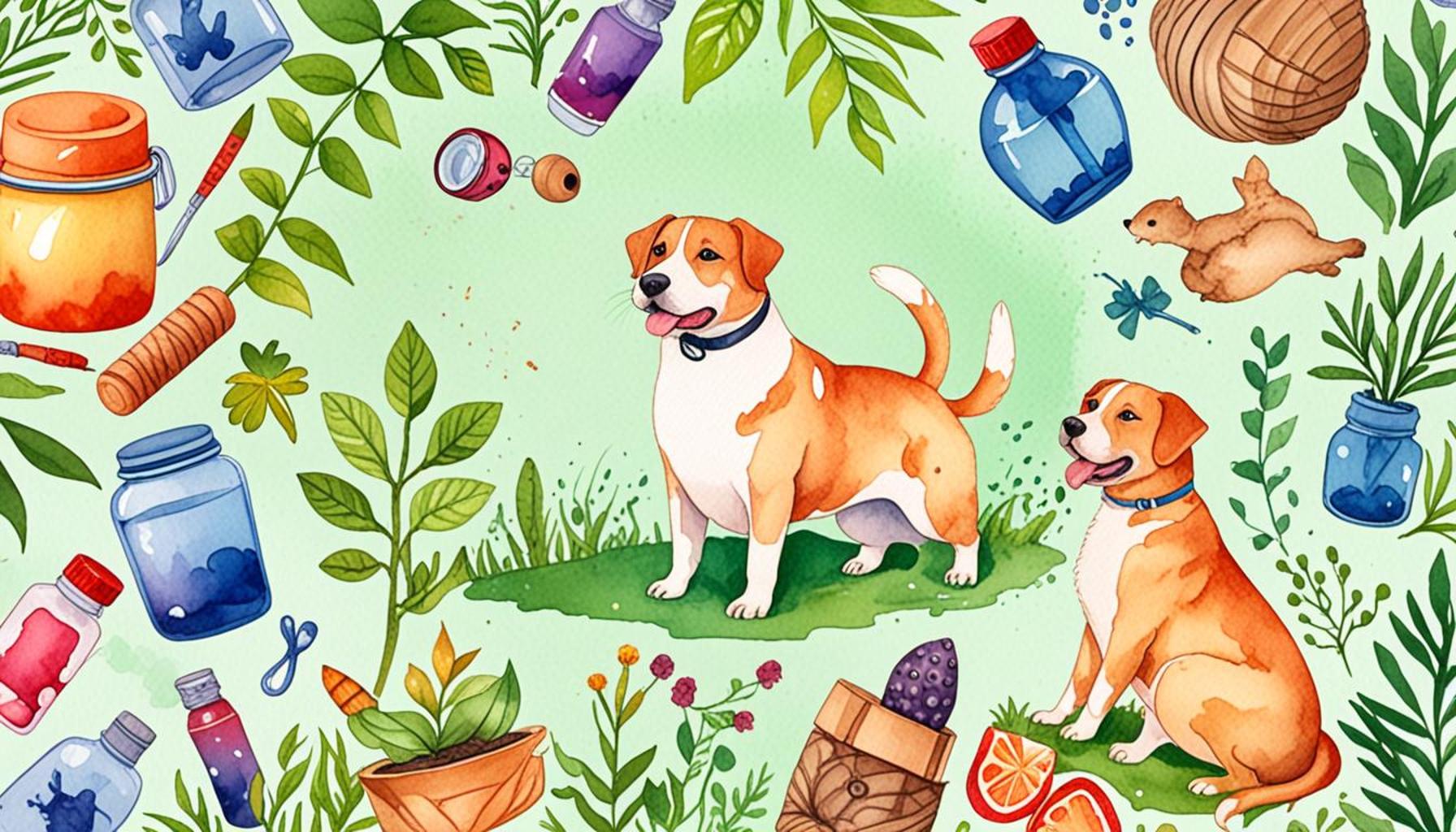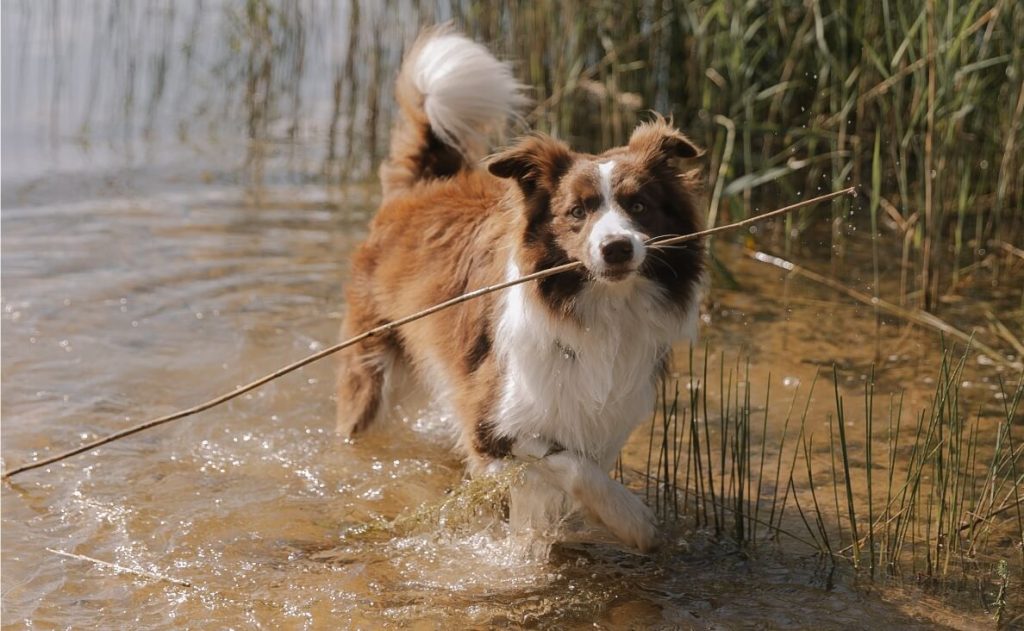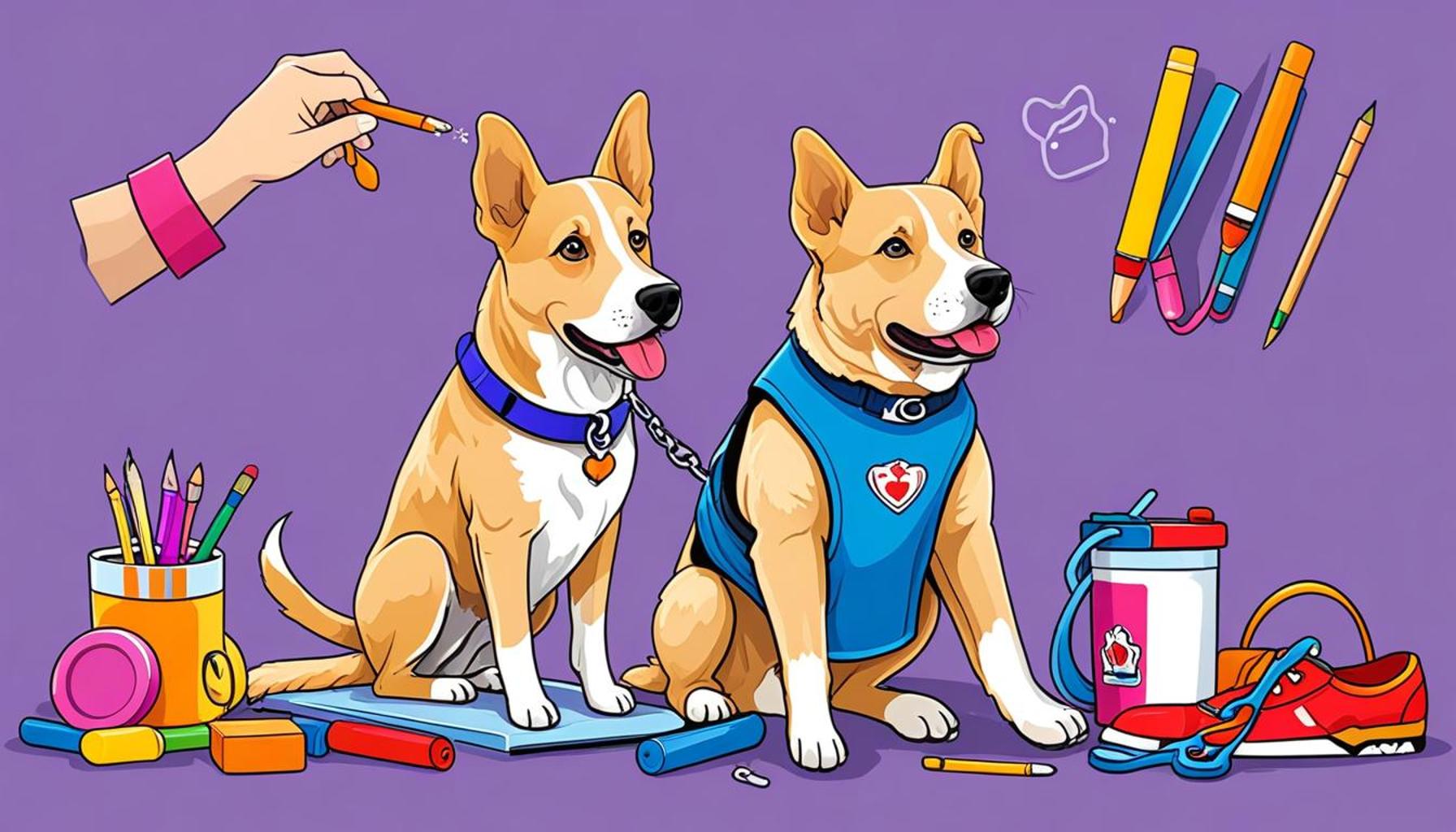The Importance of Environmental Enrichment in Pet Training

The Importance of Environmental Enrichment in Pet Training
As pet owners, we often celebrate the joys of having a well-trained companion by our side. But achieving mastery in training demands more than routine commands; it requires a thoughtfully constructed and stimulating environment. Environmental enrichment encompasses a variety of activities and resources designed to bolster an animal’s physical and mental health. This concept is not merely an afterthought, but rather a cornerstone of effective pet training.
So, why is it essential to prioritize environmental enrichment during the training process? Here are several compelling reasons:
- Enhances Learning: Research has shown that pets immersed in a diverse array of stimulating activities often learn commands and tasks at a faster rate. For example, dogs that participate in agility training do not just improve their physical skills but also enhance their focus and responsiveness, as the various challenges keep their minds engaged.
- Reduces Boredom: Providing a stimulating environment dramatically lessens the likelihood of developing unwanted behaviors stemming from boredom. Cats, for instance, are notorious for engaging in destructive behaviors when left unstimulated for long periods. By introducing climbing trees or interactive laser toys, owners can channel their pets’ energy into positive outlets.
- Improves Bonding: Engaging in interactive activities—like fetch, hide-and-seek, or simply training together—helps to strengthen the emotional bond between pets and their owners. This connection not only makes training more effective but also fosters trust and security.
The forms of environmental enrichment are as varied as the pets themselves. Here are some practical examples of enrichment activities:
- Toys: Introduce toys that challenge your pet’s intellect, such as puzzle feeders that require them to solve problems for treats, sharpening their cognitive skills while they play.
- Outdoor Adventures: Take your pet on excursions that expose them to different sights, sounds, and smells. A simple walk in a park, hiking in the woods, or visiting a pet-friendly beach can provide an array of new experiences that refresh your pet’s mind.
- Social Interaction: Arrange playdates or visits to dog parks where your pet can socialize with other animals. These interactions can teach them social cues and help them adapt to various personalities.
Recognizing the importance of environmental enrichment sets the stage for a productive and enjoyable training experience. It transforms training from a mundane routine into a multifaceted journey of discovery for both you and your pet. In the upcoming sections, we will delve deeper into effective strategies to maximize your pet’s learning journey through tailored enrichment ideas that suit various species, ages, and temperaments. Stay tuned for insights that will enhance your relationship with your furry friend!
DISCOVER MORE: Click here to learn effective methods

Unlocking Potential: The Role of Environmental Enrichment in Training
Environmental enrichment is not just a trendy buzzword among pet enthusiasts; it is a dynamic tool that enhances the overall training experience for pets and their owners alike. By immersing pets in a variety of stimulating contexts, owners can unlock their companions’ natural abilities and facilitate a more fruitful training process. This concept hinges on the premise that animals, much like humans, thrive in environments that provide them with challenges, opportunities, and variety.
One of the most significant benefits of environmental enrichment is its capacity to elevate the learning experience. Dogs, for example, are highly social and intelligent creatures. According to a study published in the journal *Animal Cognition*, dogs exposed to enriched environments—complete with varied stimuli—showed improved problem-solving skills compared to those in more monotonous settings. When training, incorporating elements such as interactive toys or novel activities ensures that pets remain engaged and eager to learn. The end result? Enhanced skills and faster mastery of commands, which leads to a more obedient and well-adjusted pet.
The incorporation of enrichment tools also plays a vital role in preventing behavioral issues. Boredom can be a pet owner’s nightmare, prompting issues like excessive barking, destructive chewing, or even aggression. By offering enriching activities tailored to an animal’s preferences, these problems can often be curtailed. For instance, while dogs may flourish in obedience classes or agility courses, cats may benefit from climbing structures or engaging puzzle toys. These outlets can redirect pent-up energy and encourage positive behaviors.
Additionally, engaging in enrichment activities alongside their pets encourages owners to strengthen their mutual bond. Activities such as interactive fetch sessions, scent games, or even cooperative tasks build trust and understanding between companions. A study conducted by the American Humane Society found that dogs who routinely engaged in social and physical activities with their owners demonstrated not only stronger recognition of commands but also a heightened emotional connection. This relationship becomes a pivotal element in training success, as pets that feel secure and loved are more likely to respond positively to commands.
To fully understand the breadth of environmental enrichment, it is essential to explore the myriad forms it can take. Here is a list of effective enrichment ideas that can easily be integrated into daily routines:
- Interactive Puzzle Toys: These can stimulate your pet’s mind while rewarding them for their efforts, such as toys that dispense treats when solved.
- Obedience Classes and Workshops: Offer your pet structured learning experiences where they can gain new skills alongside socializing with others.
- Agility Courses: For dogs, these can promote physical fitness while reinforcing commands, creating a fun and energetic training atmosphere.
- Nature Outings: Exploring new environments allows pets to engage with diverse stimuli, making walks more inspiring and enriching.
- DIY Enrichment Stations: Create areas at home that cater to your pet’s instinctive behaviors, like digging, climbing, or scratching.
Recognizing the vital role of environmental enrichment in training is a key strategy for any pet owner. It transforms what could otherwise be a routine process into an engaging adventure for both owner and pet. As we continue this exploration, we will dive deeper into specific techniques that can tailor enrichment activities to fit the unique personality traits and needs of different breeds and species. Stay tuned to learn more about forging a lasting and fulfilling bond with your furry friend!
| Advantages of Environmental Enrichment | Impact on Training |
|---|---|
| Cognitive Stimulation | Enhances problem-solving skills and boosts intelligent behaviors. |
| Behavioral Improvement | Reduces destructive behaviors and promotes relaxation during training sessions. |
The practice of environmental enrichment in pet training is not just a trend; it offers numerous advantages that can significantly affect an animal’s behavior and learning capability. For example, providing cognitive stimulation through tools like puzzle feeders or interactive toys can lead to enhanced problem-solving skills, which are crucial for various training tasks. Animals thrive on challenges, and the stimulation derived from such activities encourages them to engage with their surroundings actively.Similarly, incorporating behavioral improvement techniques into training regimens leads to reduced destructive behaviors such as chewing furniture or excessive barking. When pets are adequately mentally and physically engaged, they are less likely to seek outlets for pent-up energy or anxiety, resulting in a calmer demeanor during training sessions. Through these methods, trainers can create a more positive learning atmosphere, highlighting the undeniable importance of environmental enrichment in effective pet training strategies.
DIVE DEEPER: Click here to learn why socialization matters for your pet’s happiness
Tailoring Enrichment: Customized Approaches that Inspire Training
The versatility of environmental enrichment allows for personalized approaches, making it critical to cater to the unique needs of different pet species, breeds, and individual temperaments. An effective training regimen embraces the concept of individualized enrichment, not only increasing engagement but also building a pet’s confidence and curiosity. Take dogs as an example; various breeds exhibit distinct traits that can influence enrichment strategies. Herding breeds like Border Collies thrive on mental challenges and may respond well to activities such as obedience training coupled with herding simulations. In contrast, breeds such as basset hounds may prefer activities that engage their sense of smell, such as scent detection games, to maximize their training potential.
Moreover, understanding the specific instincts of a pet can be immensely beneficial in creating a fulfilling enrichment environment. For instance, rabbits are naturally inclined to chew and dig. Their enrichment can include items such as cardboard boxes filled with crumpled paper or safe wooden logs. These alternatives not only satisfy their instincts but also allow for controlled exploration and engagement. Similarly, for cats, incorporating climbing trees and vertical spaces can simulate their natural behaviors as agile climbers. This approach nurtures a sense of security and encourages play, ultimately enhancing their overall training experience.
The concept of environmental enrichment can also extend into the realm of technology. Smart pet devices, such as treat-dispensing cameras and interactive feeders, have gained traction among modern pet owners. These innovations enable remote interaction, allowing pet parents to engage their animals in stimulating ways, even from afar. The University of Pennsylvania School of Veterinary Medicine highlighted that pets exposed to such technological interactions display decreased anxiety and improved cognitive abilities. Utilizing these high-tech tools can create a bridge between play and training by providing engaging ways to reinforce commands and behaviors.
To truly make the most out of enriching experiences, owners should embrace the power of variety. Introducing new and unexpected activities, such as rotating toys and introducing fresh scents, will keep pets attentive and alert. Whether it’s engaging in different games each week or switching up their daily walking routes, variety prevents monotony and fosters enthusiasm. Studies conducted by the American Society for the Prevention of Cruelty to Animals (ASPCA) reveal that animals exposed to diverse stimuli exhibit lower stress levels, which correlates positively with their ability to learn and absorb new information.
Importantly, environmental enrichment can also serve as a preventive measure against common health issues. For instance, a well-structured enrichment regime significantly reduces the likelihood of obesity in pets, as it encourages physical activity and stimulates mental engagement. The Association for Pet Obesity Prevention reported that over 50% of pets in the U.S. are classified as overweight or obese, conditions often linked to sedentary lifestyles. By integrating appropriate enrichment strategies with regular training, pet owners can effectively combat this epidemic and enhance their pets’ quality of life.
As we delve deeper into the practices surrounding effective environmental enrichment, it becomes increasingly clear that understanding our pets as individuals is critical. Whether it’s pairing physical activity with mental stimulation or relying on innovative technologies, the key to successful training often lies in the enrichment designed specifically for each pet. Stay with us as we continue to explore more enriching techniques that promise to not only enhance training outcomes but also lead to deeper connections with our beloved companions.
LEARN MORE: Click here to discover the impact of socialization on your pet’s emotional health
Conclusion: Nurturing Relationships Through Environmental Enrichment
In the journey of pet training, environmental enrichment serves as a cornerstone that can significantly influence not just learning outcomes but also the overall wellbeing of our cherished companions. By focusing on tailored, individualized enrichment strategies that align with the specific needs and instincts of each pet, owners can foster an environment that encourages curiosity, engagement, and a strong bond between pet and owner. The variety of enrichment tools—ranging from interactive toys to innovative technology—unlocks new avenues for mental and physical stimulation, paving the way for pets to thrive.
Moreover, the insights from studies conducted by reputable organizations such as the ASPCA and the Association for Pet Obesity Prevention accentuate the pivotal role of enrichment in combating issues like obesity and stress among pets. By integrating consistent enrichment practices with training, pet owners can address common behavioral problems that stem from boredom and inactivity. This proactive approach not only enhances training efficacy but also enriches the quality of life for pets, allowing them to flourish in a more stimulating environment.
As we continue to evolve our understanding of pet training, it becomes evident that emphasizing environmental enrichment not only cultivates learning but also nurtures emotional health and happiness. For pet owners eager to explore further, the potential for creativity in enrichment activities is boundless. Ultimately, the path to a well-trained and happy pet begins with recognizing the importance of an enriched environment—a journey that benefits both pets and their humans alike.


